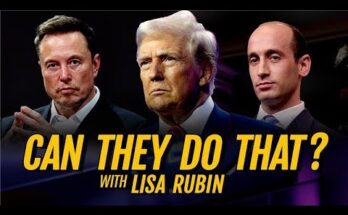Former President Donald Trump’s political fortunes have long hinged on the support of swing voters, those critical independents and disillusioned Democrats who sought economic improvement under his administration. As he continues to pursue another presidential run, there are growing concerns that Trump is on “dangerous grounds” with this vital electorate, especially given recent policy decisions and his handling of key economic issues.
While Trump initially won over swing voters by promising economic growth, lower taxes, job creation, and deregulation, many are beginning to question whether his policies truly delivered on those promises. As inflation, supply chain issues, and global economic disruptions continue to pose challenges, swing voters are left grappling with the reality of whether Trump’s economic vision was as effective as he promised—or whether his leadership inadvertently exacerbated the problems that voters hoped he would fix.
The Economic Promises Trump Made
When Trump took office in 2017, he framed his economic agenda as one that would benefit the middle class and American workers. His administration focused on tax cuts, particularly for businesses, with the hope that this would spur economic growth and job creation. He also pushed for deregulation, arguing that it would remove government red tape, making it easier for businesses to thrive and for workers to find better-paying jobs. The “America First” trade policies, including tariffs on China, were also part of Trump’s efforts to bring manufacturing jobs back to the U.S. and level the playing field in global commerce.
For a time, the results seemed promising. Unemployment reached historic lows, wages for lower-income workers grew, and stock markets soared. This led many voters—particularly those in key swing states—to view Trump as the economic savior they had long been waiting for. Many were especially drawn to his tough stance on trade and his promises to protect American jobs from outsourcing.
But as Trump’s first term progressed, cracks began to emerge in his economic agenda. Critics argue that while corporate profits soared due to tax cuts, these gains were not always passed down to workers, particularly in terms of wage increases. In fact, Trump’s presidency coincided with an increasing wealth gap, with the rich becoming richer while the working class struggled to make ends meet in some parts of the country. Even the tax cuts themselves, which disproportionately benefited the wealthy, became a point of contention.
The Aftermath of Trump’s Economic Policies
One of the key issues that could impact Trump’s relationship with swing voters is the aftermath of his economic policies. While the economy initially boomed under Trump, the COVID-19 pandemic exposed vulnerabilities in the system, particularly in sectors like healthcare, manufacturing, and labor. The economic shutdowns, loss of jobs, and growing public health crisis created a perfect storm that ultimately led to an economic recession.
Trump’s handling of the pandemic was widely criticized for failing to control the spread of the virus or ensure that federal aid was distributed effectively. This left millions of Americans unemployed and in financial uncertainty. The economic recovery that followed was uneven, with lower-income and minority workers disproportionately affected. This raised questions about Trump’s ability to effectively manage an economic crisis when the country was in dire need of competent leadership.
As the nation faced economic turmoil, Trump’s promises to bring jobs back to the U.S. and boost the manufacturing sector began to ring hollow for many. His “America First” approach led to a trade war with China, which hit farmers and manufacturing workers in particular, as tariffs on Chinese goods led to higher costs for American consumers and businesses.
The perception that Trump’s policies benefited the wealthy and large corporations more than the working class has put him on “dangerous grounds” with swing voters who were hoping for tangible economic improvement. This group, who once believed in Trump’s economic message, may now feel disillusioned as they witness the consequences of his economic policies, especially as inflation and cost-of-living concerns rise.
The Impact of Inflation and Supply Chain Issues
Inflation has become one of the most pressing concerns for American voters in recent years, particularly in the wake of the COVID-19 pandemic. Rising prices on goods, fuel, and housing have put significant strain on household budgets. For many swing voters, this has created an opportunity for Democrats to regain ground, as they can point to Trump’s economic missteps, including his handling of trade wars and the pandemic.
While inflation is largely a result of global supply chain disruptions, a high-demand economy, and increasing energy prices, many voters still associate economic hardship with Trump’s time in office. With prices rising in every corner of the economy, swing voters who had supported Trump in 2016 may now feel that his promises of economic improvement were ultimately unfulfilled.
Furthermore, Trump’s lack of a coherent plan for addressing long-term economic challenges, such as climate change and automation, has left many voters concerned about the future. While Trump’s economic message largely centered on immediate, short-term gains, it did little to address the growing structural problems in the American economy that affect jobs, wages, and the future of the labor market.
A Recalibration of Swing Voter Sentiment
Many of the swing voters who once supported Trump have seen their economic situation worsen in the wake of his presidency, and as a result, their opinions have begun to shift. Swing voters, particularly in key battleground states like Michigan, Wisconsin, and Pennsylvania, were drawn to Trump in 2016 by his promises of bringing back manufacturing jobs and improving economic conditions. However, after experiencing years of uncertainty and rising costs, many are reconsidering their support for Trump.
A recent poll indicates that while Trump remains a popular figure among his base, his approval among independent voters has declined significantly. The promise of economic improvement no longer resonates the way it did during his first campaign. Instead, these voters are looking for stability, leadership, and concrete plans to address the economic issues that continue to plague them.
The shift in swing voter sentiment is especially significant given the upcoming election cycle. Trump’s base is still highly motivated, but the key to winning in 2024 lies in reclaiming the support of those independent voters who were once swayed by his economic promises. If Trump cannot convince them that he can deliver real economic change, he may find himself on the outs with the very electorate that put him in office in the first place.
The Road Ahead for Trump
As Trump campaigns for another term, he faces an uphill battle in regaining the support of the swing voters who were once at the heart of his political coalition. While his supporters remain loyal, it is unclear whether his economic message will still resonate with voters who are concerned about inflation, job security, and the future of the American economy. Trump will need to navigate the complexities of these economic issues carefully and offer tangible solutions to the problems that continue to affect millions of Americans.
Ultimately, Trump’s relationship with swing voters will determine whether he can make a successful return to the White House. If he can regain their trust and prove that he has the ability to deliver real economic improvements, he may once again capture the presidency. However, if his policies continue to fall short, he may find that his political base is not enough to secure victory in an election that is likely to be defined by economic concerns.


